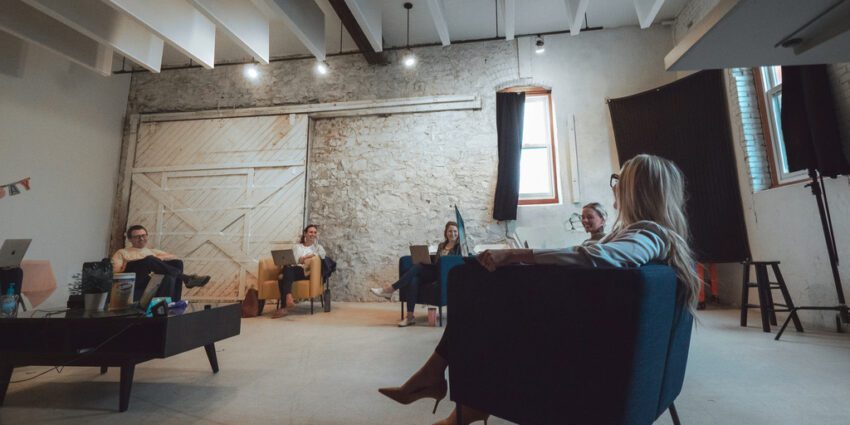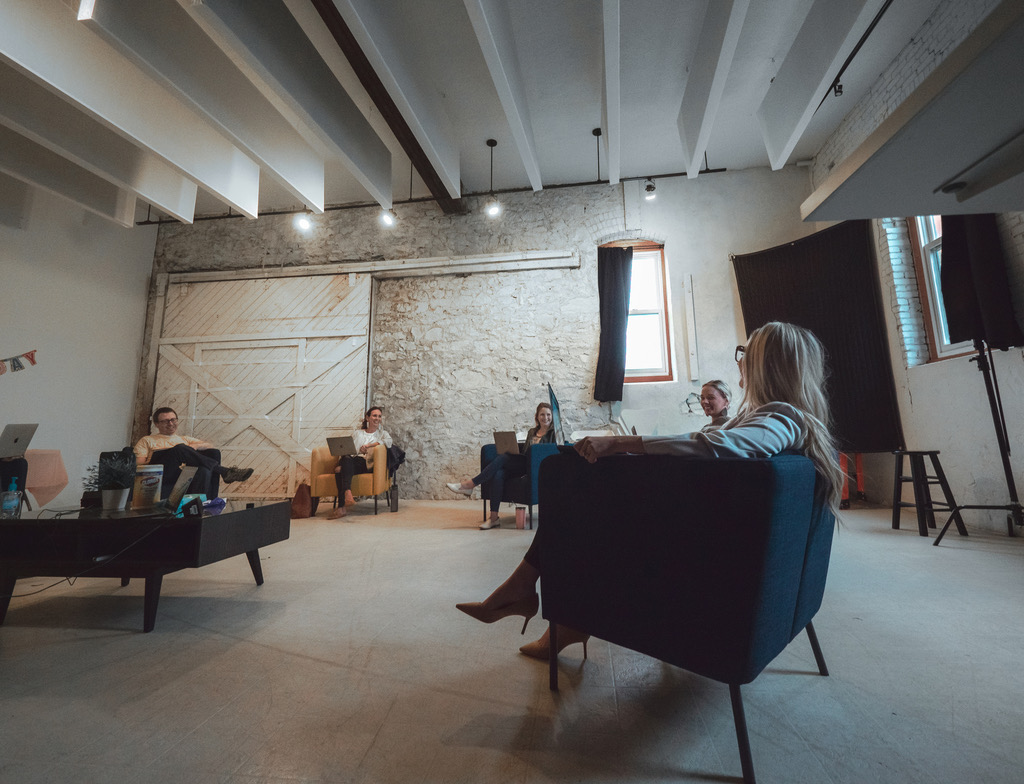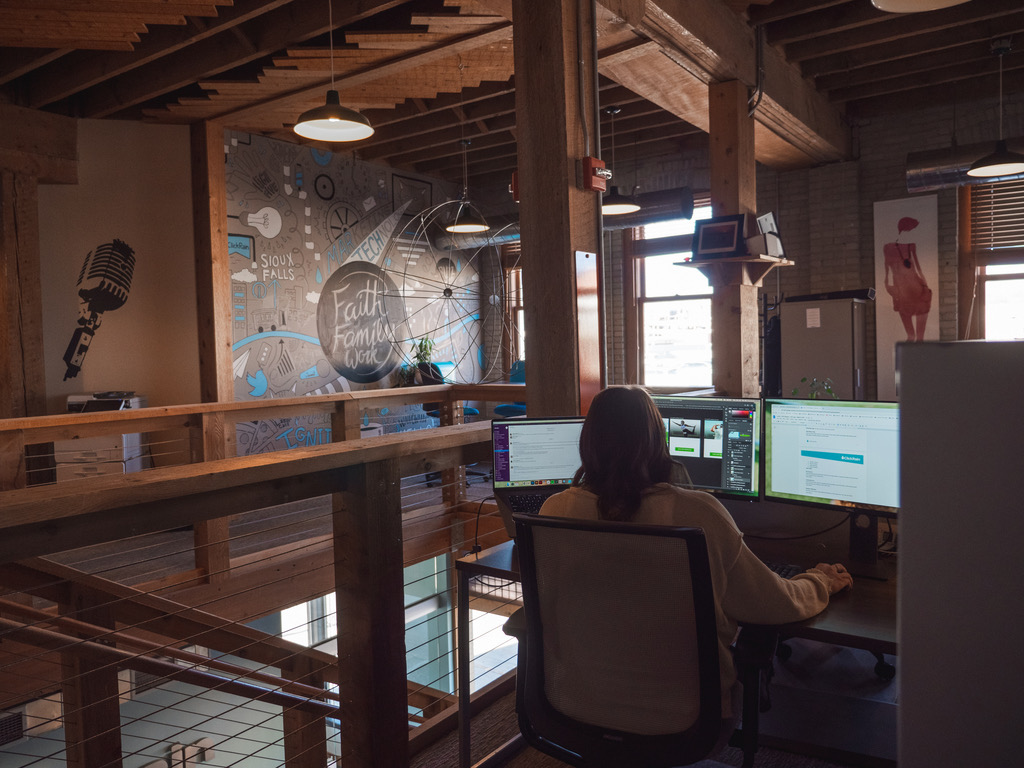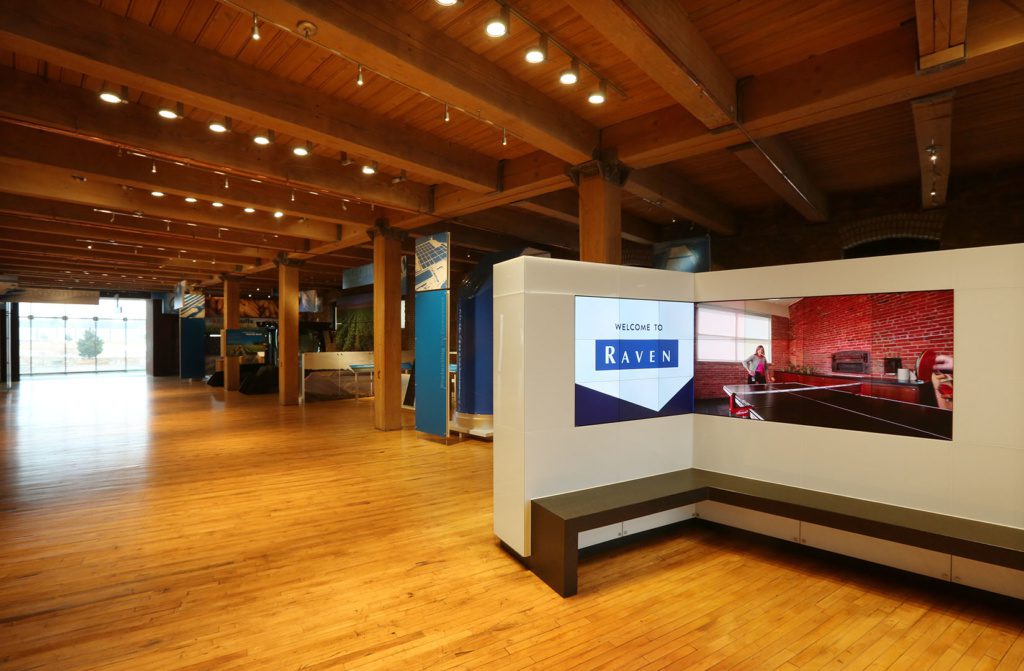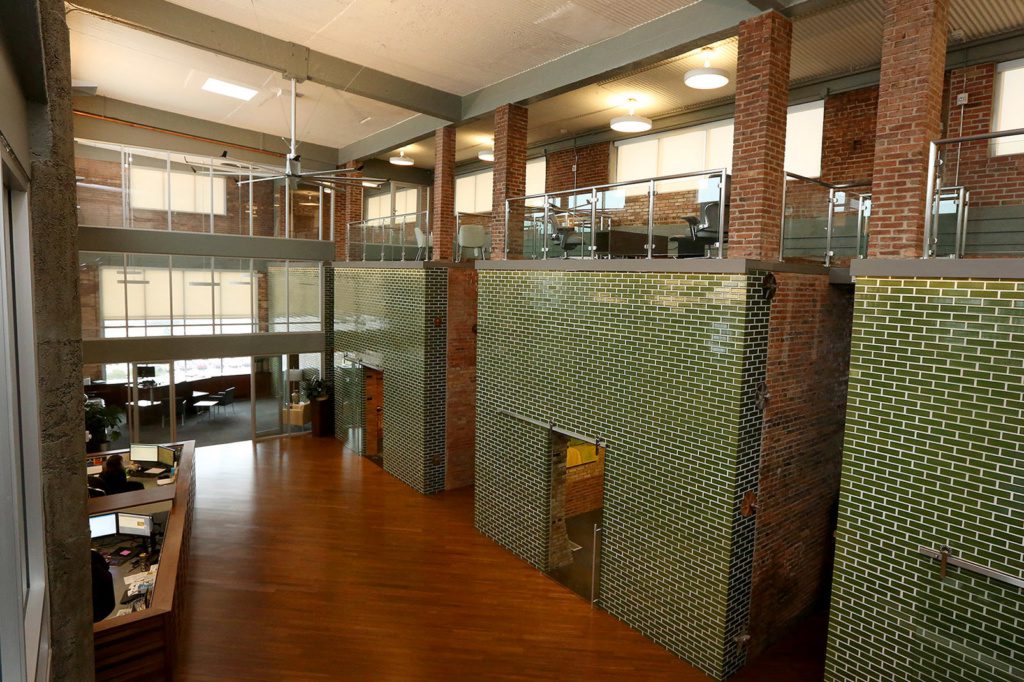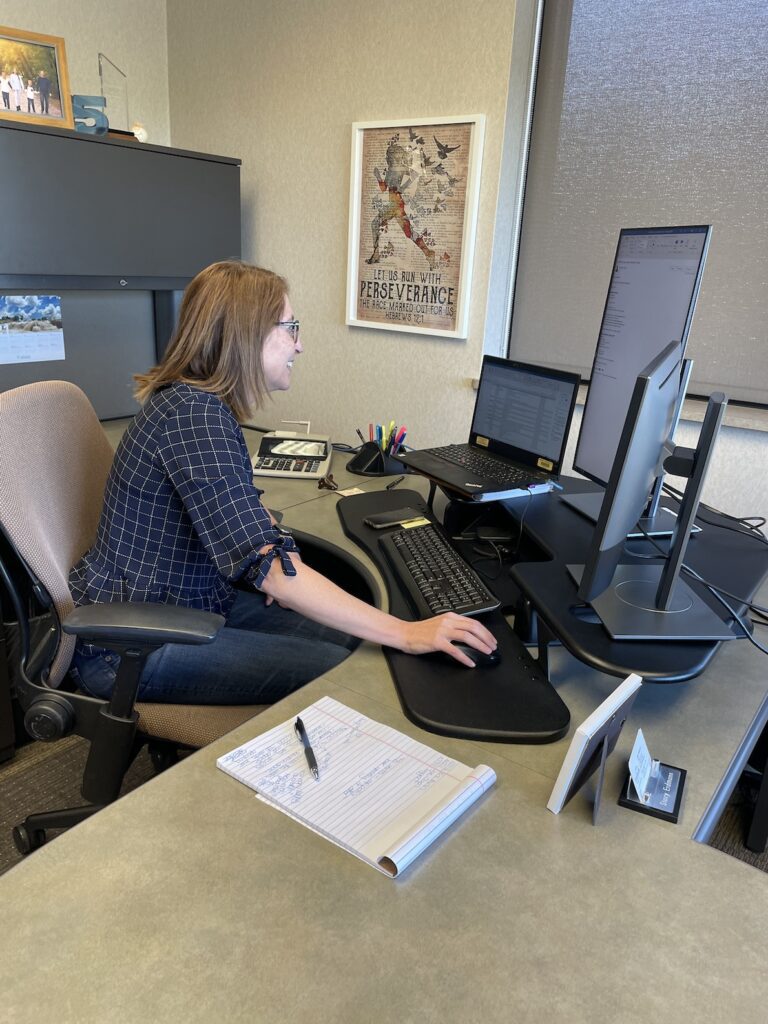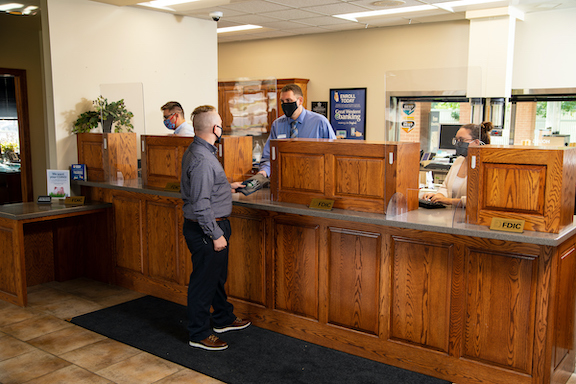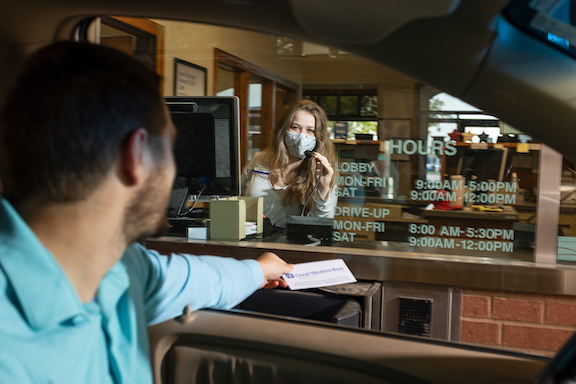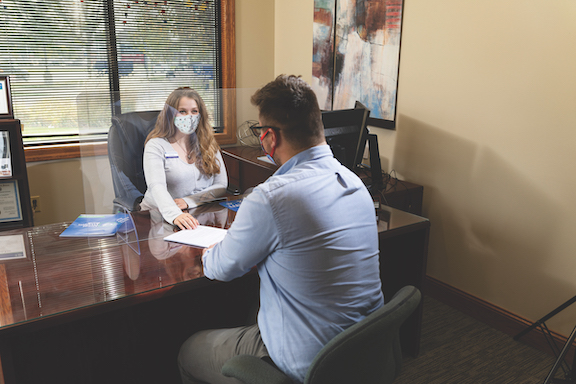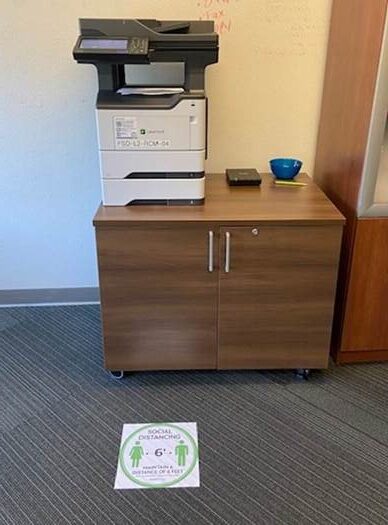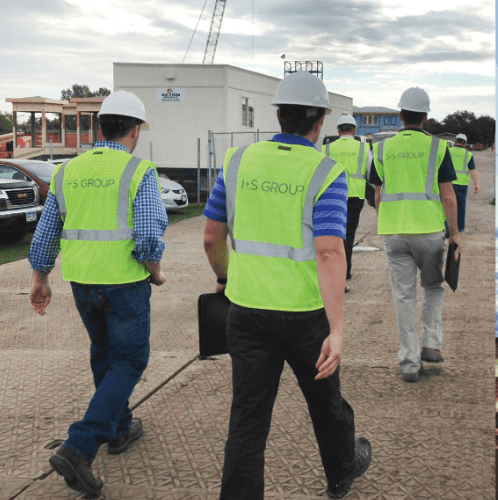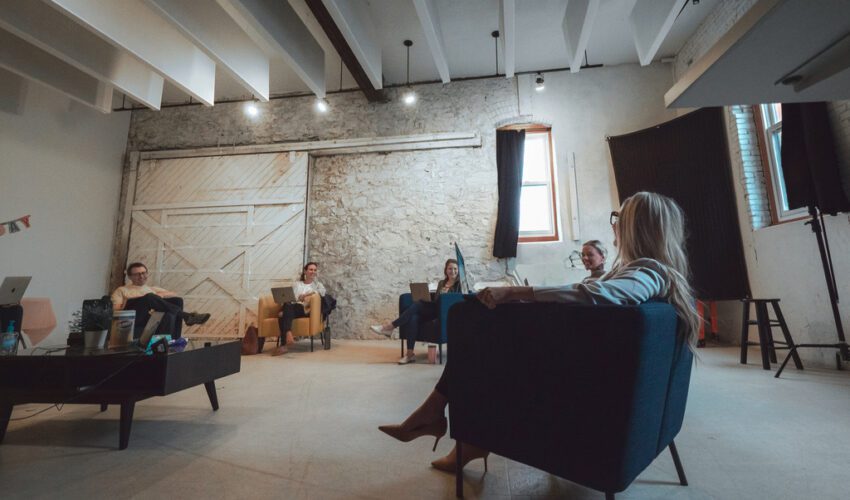Returning to the office: As businesses prepare to bring back more workers, approaches vary
May 10, 2021
While many businesses were in the early stages of determining how, when and which employees should work remotely during the pandemic, Lemonly moved fast.
The day the first COVID-19 case was reported in Minnehaha County, in March 2020, the Sioux Falls firm shared that its 15 employees would begin working remotely the following week.
With two employees already working remotely full time, the firm was used to the arrangement, co-founder John Meyer said at the time:
“We have the privilege of working for a company that can operate ‘business as usual’ while fully remote, so we are going to do so, and we encourage others in similar situations to do the same,” he said.
More than one year later, Lemonly now is part of the larger digital marketing firm Click Rain, a company also known for worker flexibility. The two together have navigated the same questions faced by countless other businesses: What does a post-pandemic work environment look like? Do you bring staff back to the workplace and, if so, on what basis?
For Click Rain, which has 55 employees post-acquisition, that answer starts with June 1. That’s the target time frame for opening offices, though it could be sooner, and for offering a new long-term remote policy.
“It brings more options, so we can customize for individual needs,” CEO Natalie Eisenberg said.
“It’s been, in a way, refreshing to have the license to try some new things, reevaluate our options and now think differently forever.”
Offering options
At Click Rain, employees will fall into one of three categories. Those who prefer to spend most of their work life in the office will have a dedicated workspace but still have the option to work from home up to two days per week.
“We’ve really always had that, but this puts more definition to it,” Eisenberg said.
A middle group will be considered part-time remote with the plan to work three or four days each week from home.
“And these people are no longer guaranteed a desk, so when they do come in, it’s more using the common spaces we have,” Eisenberg said.
And employees who have been with the company at least 90 days now can apply for full-time remote status.
“We’ve done some informal surveys about this topic to get a sense for what people would need, and by far most people fall into that occasional (work from home) bucket,” Eisenberg said.
The firm has allowed half of the team to come to work for a week and then work from home, which meant it hasn’t had to make changes to the office layouts to provide enough distancing. The offices now are adding some barriers in preparation for more people returning.
“The only thing we are adjusting is how to retain that social opportunity for team members that we really enjoyed in both our companies,” Eisenberg said. “They don’t have to be missed in this new environment; they just have to be handled in a different way.”
Both companies lease offices downtown, and “we’re still vetting our needs for a future location,” she added. “And figuring it out based on our teams’ preferences how much space will be needed.”
At Raven Industries, employees who could work from home did so beginning in late March 2020, came back during the summer and then returned home in September as the second wave of cases started.
The goal is to have all office staff back again by mid-May.
“Hearing from our employees, I think people are ready to get back,” said Margaret Carmody, executive director of organizational culture, corporate communications and strategic marketing.
“The first day we opened voluntarily, the parking lot was more full than I’ve seen it in a year. A lot of people enjoy coming to work and collaboration and having the relationships they do. We’ve seen a huge correlation of good mental health and what the workplace can provide and how relationships are key.”
Tom Slattery, director of corporate safety and risk management, has a chemistry and microbiology background and has helped contribute to the company’s response to the pandemic.
“At our headquarters, we have 15-foot ceilings, so knowing today that COVID is primarily spread by aerosols, we mostly made HVAC improvements and changes,” he said.
“We’ve cranked up the outdoor air mix, so we’re turning over as much air as the system can handle.”
Raven also has upgraded its filtration system and is utilizing carbon dioxide monitors on every floor to assess air quality. And it’s keeping restrictions on occupancy in meeting spaces, along with adding dozens of room-size portable HEPA air scrubbers.
“It feeds more into a larger absenteeism program. How do we keep people healthier?” Carmody said. “Maybe we focus a little less on energy efficiency and more on air exchange. Maybe that reduces flu and colds.”
Slow returns
While many businesses such as Click Rain and Raven that are based locally have been faster to return to the workplace, those headquartered elsewhere have taken their cues at times from how other states have addressed it.
A year ago today, there would have been “nobody” in the downtown Sioux Falls Marsh & McLennan Agency office, human resource director Jamie Baker said. “It was pretty desolate.”
The firm started last year by allowing 20 percent of the 100-person office to return. Then, it was allowed to bring back 40 percent, which required people to stagger which days they worked from the office.
“Health and safety was always No. 1, but it was more some of those employees asking ‘when can I come back,’” Baker said. “It wasn’t us saying you need to come back. We had to work with corporate out of New York, and they had different protocols and levels of critical and current cases.”
They have adjusted some seating in the office and believe there will be more of a hybrid approach post-pandemic, she said.
“We had very few people remote. We never thought it could be successful. But it did teach us people could be successful in a different environment,” she said. “Productivity, we didn’t really see an issue. For the most part, our people took the challenge and did really well.”
Some struggled with loneliness and lack of interaction, she added.
“We always worry mentally about how people are doing. They might say they are fine, but are they OK? That’s been our No. 1 concern, so being able to open to more people has been a blessing.”
The hope is to allow 60 percent back, she said.
“We had to have those hard conversations because there are still offices in our footprint with zero people in the office. We had to put a business case together to go to the 40 percent mark. We had to explain South Dakota is open, our clients are wanting us to come see them or for them to come see us, and we can continue to do this safely. We had to sell that South Dakota isn’t the same as New York.”
Going forward, the office could have more temporary workspaces or drop zones. Employees are split on the right approach, Baker said.
“I would say 50-50, and it’s been interesting to see. It feels almost team-based. Some (teams) want to be back in the office, and others say they are OK and can continue to be successful. We had a lot of people say once more people are vaccinated they would be more willing.”
Onboarding remotely has been a challenge, she said. But the firm also has made three out of its four most recent hires in other markets. Two will be working from the Minneapolis area and another from Bismarck, North Dakota.
That likely won’t be the norm though.
“We realize our offices are going to be the core of our culture. That’s the biggest thing we don’t want to lose,” Baker said. “We want to make sure the office offers a physical space for collaboration but still make sure you can do your job off-site.”
Starting this month, Eide Bailly LLP will be able to decide as a Sioux Falls office when and how people can begin returning in greater numbers.
For the past six months, about 40 percent of employees have worked in the downtown office at a time. With tax season, that meant some came in Monday, Wednesday and Friday, and others did Tuesday, Thursday and Saturday.
“We’re trying to find opportunities to allow those that want to work from the office to work from the office as much as possible,” managing partner Derrick Larson said.
“In Sioux Falls, we’re going to be moving toward anyone ready to come back being allowed to come back, and anyone who is not comfortable will be allowed to continue to work remote as long as that works for their position.”
After the delayed tax filing deadline May 17, business will be a little slower in the office anyway, making for an easier transition, he said.
“A lot of our team members are ready to come back to the office on a more consistent basis,” he said. Part of that is culture, and some are just ready to get back. We’re trying to make it really flexible this summer to make sure nobody is putting pressure on people.”
As of May 17, the 50 percent capacity on offices will be lifted, though staff should continue to work where they are comfortable. Social distancing and mask-wearing around others will be recommended, though the firm’s daily COVID-19 survey no longer will be required.
By September, the hope is to have reached a “new normal,” Larson added.
“Maintaining culture and onboarding staff is especially challenging with some staff working in the office and some working remote,” he said.
“The majority of our training has been virtual through the pandemic which will continue in the near term, but we are hoping by September we are close to our ‘new normal.’ While we will have additional staff that continue to work remote, we expect the majority of our team will work primarily from the office or at a client location.”
The firm expects that many meetings will continue to be held virtually or in a hybrid fashion in order to accommodate those that are working remote that day and those that are on a flexible work arrangement and working primarily from home, he added.
“We have not made any decisions in regards to the future of our office design and workspaces except that experienced team members who work primarily from the office will continue to have a designated workspace.”
Longer timelines
Other businesses with national reach haven’t established firm return-to-the-office plans.
While Great Western Bancorp is based in Sioux Falls, there are roughly 1,700 employees spread across the U.S. While the 175 bank branches are back open, more than one-third of employees are working from home.
“The vast majority still have the ability to work from home,” chief people office Andy Pederson said.
“Right now, we’re getting to the point, since our branches are open, especially in customer-facing roles, the vast majority of our employees want to get back and want some sense of normalcy whatever that might be. (They) want to have that social interaction and get back into the office and have those connections. Zoom is a great thing, but it’s not the same.”
In Sioux Falls, the operations center, downtown headquarters and Western Mall location are limited to 50 percent capacity. Some smaller group meetings are starting to be held.
Great Western has developed a work remote playbook as it prepares for a longer term strategy, he said.
“We have a selection process they will go through to request being a remote worker,” he said.
Employees who qualify based on their job and completing a 120-day introductory period can apply and demonstrate they have an appropriate setup at home to work, he said.
“Full-time remote will be somewhat limited. We’ll have a lot of employees who will do flexible, so it could be two or three days a week in the office.”
Great Western will reassess in early August how many people are working remote flexibly or permanently and “how it’s working, before we have to make any changes,” he continued. “It will be a work in progress.”
At Experity, which is the former DocuTap, a timeline is even less certain.
Nearly all of its 200-person Sioux Falls team is still working from home.
“Probably about 10 percent are opting to work in the office, so the option is there, but not many have taken us up on it,” chief people officer Jennifer Wood said.
The company, which also has offices in other states, had allowed up to 25 percent to return, “and we haven’t even come close to that, so we haven’t revisited it,” she said.
“I think it’s been for the most part good. We haven’t seen dramatic changes either positive or negative in productivity.”
Relationships are more challenging, especially for new hires, she said.
“It’s hard to build those relationships remotely, and I think we’re seeing some challenges with collaboration and innovation that happen dynamically when people are colliding in offices more frequently.”
Some team members still have significant concerns about returning, she added.
“There’s a sentiment among some that they don’t want to return if we have to wear masks in the office,” she said. “We’ll push for more of an on-site presences when death rates reach a level that’s consistent with the flu.”
Employee surveys have found most want to continue working remotely in some capacity but also that they miss one another and value face time, she said.
“So we’re trying to find a balance.”
In Sioux Falls, the company’s 30,000s square feet of downtown office space at Ninth and Phillips is listed for sublease.
“I don’t think we’ll be back in the same capacity,” Wood said. “I know we won’t. The world of work has changed and we need to adapt to it. We haven’t come out with timelines or real decisions about what it will look like when it reaches that point.”

